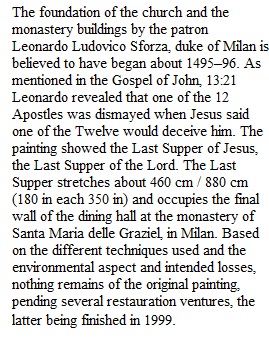


Q Week 3 - Discussion Forum 2 5555 unread replies.7979 replies. Your initial discussion thread is due on Day 3 (Thursday) and you have until Day 7 (Monday) to respond to your classmates. Your grade will reflect both the quality of your initial post and the depth of your responses. Refer to the Discussion Forum Grading Rubric under the Settings icon above for guidance on how your discussion will be evaluated. Art, Architecture, and Our Lives [WLOs: 4, 5] [CLOs: 1, 2, 3, 4, 5] Prior to beginning work on this discussion forum, read Chapter 6 and 7 from the textbook, and watch History of Arch Lecture 23 Ideal Renaissance Centralized Churches (Links to an external site.). Art historians seek to understand the connection between art and the individuals and societies which create and experience art. Select a work of art or architecture of your choice from the textbook, a website listed on the ART101 Museum and Images Website download document, one of the assigned virtual reality videos, or visit your local museum. Your work of art should be one that you have not previously examined in this class. Provide the title, artist, date, and location (where the work was created) for your work of art or architecture, embedding it if possible. Then, drawing from Chapters 6 and 7 from the textbook, answer the following questions: What purposes did your chosen work of art or architecture serve? Examples include aesthetics, expression (philosophical, political, religious, personal), unification, exclusion, communication, protest and shock, celebration and commemoration, worship, information, education, and inspiration. What is being conveyed in your chosen work of art or architecture? How is your chosen work of art or architecture reflective of the society it was created in or for? What changes (social, religious, scientific, technological) were taking place when the work of art or architecture was created? How are these changes reflected in the materials, techniques, or subject matter of the work? Cite your sources as outlined in the Ashford Writing Center (Links to an external site.) guides on APA: Citing Within Your Paper (Links to an external site.) and APA: Formatting Your References List (Links to an external site.). For works of art, follow the basic modified APA Style reference entry format in the APA Style Reference Entries for Artwork download document. Your initial post must be at least 200 words in length. Guided Response: Review several of your classmates’ posts. By Day 7, provide a substantive response to at least two of your classmates by adding and expanding upon the connection between art, individuals, and societies. The Last Supper is a late 15th-century mural (Links to an external site.) painting by Italian artist Leonardo da Vinci (Links to an external site.) and is placed in the refectory (Links to an external site.) of the Convent of Santa Maria delle Grazie (Links to an external site.) in Milan (Links to an external site.), Italy (Links to an external site.).
View Related Questions